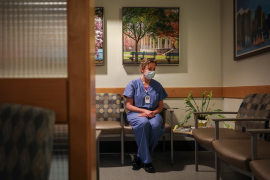The issue of Medicares costs and how to pay them is expected to move to the forefront of the upcoming national debate. While it has been widely reported that Part A of the program—hospital services, skilled nursing, and home care—is in financial straits, Part B—physician services, outpatient care, laboratory services, and durable medical goods—will also come under scrutiny.
A new Commonwealth Fund study, Increasing Medicares Part B Premium, by Marilyn Moon and Crystal Kuntz of the Urban Institute, evaluates various proposals for increasing beneficiaries share of Part B costs and assesses their impact on the elderly.
The current premium for Medicare Part B is $510 per year. Raising the premium from 25 percent to 30 percent of program outlays would increase government revenues by $3 to $4 billion dollars; doubling the premium would increase them by $19 billion. These options, however, would also increase the burden on low income beneficiaries, who already spend an average of 30 percent of their income on health care.
Many proposed solutions to this problem would create an additional surcharge on those with incomes of $50,000 a year or more. The authors, however, contend that since so few people over age 65 are at this income level, substantial revenues would not be generated. Generating more revenues would require placing the surcharge on those with incomes of $30,000 or above, a level which few would consider "high income."
Such income-related premiums may help to avoid a higher across-the-board increase, yet the relatively low revenues generated make it a less attractive option, especially considering the new challenges the change would bring.
Monitoring an income-related premium, for instance, would incur higher administrative costs. Another problem would be determining who would administer the premium—the Internal Revenue Service (IRS) or Medicare? Moon and Kuntz note that any involvement by the IRS is often perceived as a tax hike, yet the IRS has the greatest ability to verify incomes for those with substantial resources.
Even if an income-related premium were limited to those with higher incomes and raised little revenue, proponents believe that setting such a precedent is crucial to resolving Medicares budgetary crisis. To opponents, such a model implies that lower income cutoffs will follow in the future. Thus, the limited revenue raised, combined with concerns about administrative burdens, may offset the benefits of this approach.
Facts and Figures
- While incomes for the elderly have grown by 26 percent since 1975, this rise masks the number who remain in poverty: 13 percent of those over the age of 75, including 23 percent of black males and 38 percent of black females.
- Nearly one in four Medicare beneficiaries has an income below $10,000; 42 percent of disabled Medicare beneficiaries have incomes below $10,000.
- Out-of-pocket health spending for the elderly represents 21 percent of family income.
The full report is not available at this time.


